“…an intelligent, powerful and wholly impressive innovation in gaming.”
Learning to play the guitar has always been a personal aspiration, but sadly one which I have never been able to achieve. For a few years now I have tried to teach myself to play, and though I have picked up basic techniques and know almost everything theoretical about the instruments themselves, something has always come up to stop me in my tracks. So when Rocksmith 2014 Edition popped up at E3 with Alice in Chains guitarist Jerry Cantrell showing it off with a live demonstration, my interest was captured and the possibility of finally learning to play was rekindled in my mind. The game also claims to be “The Fastest Way To Learn Guitar”; an interesting and desirable claim to any budding musician if it
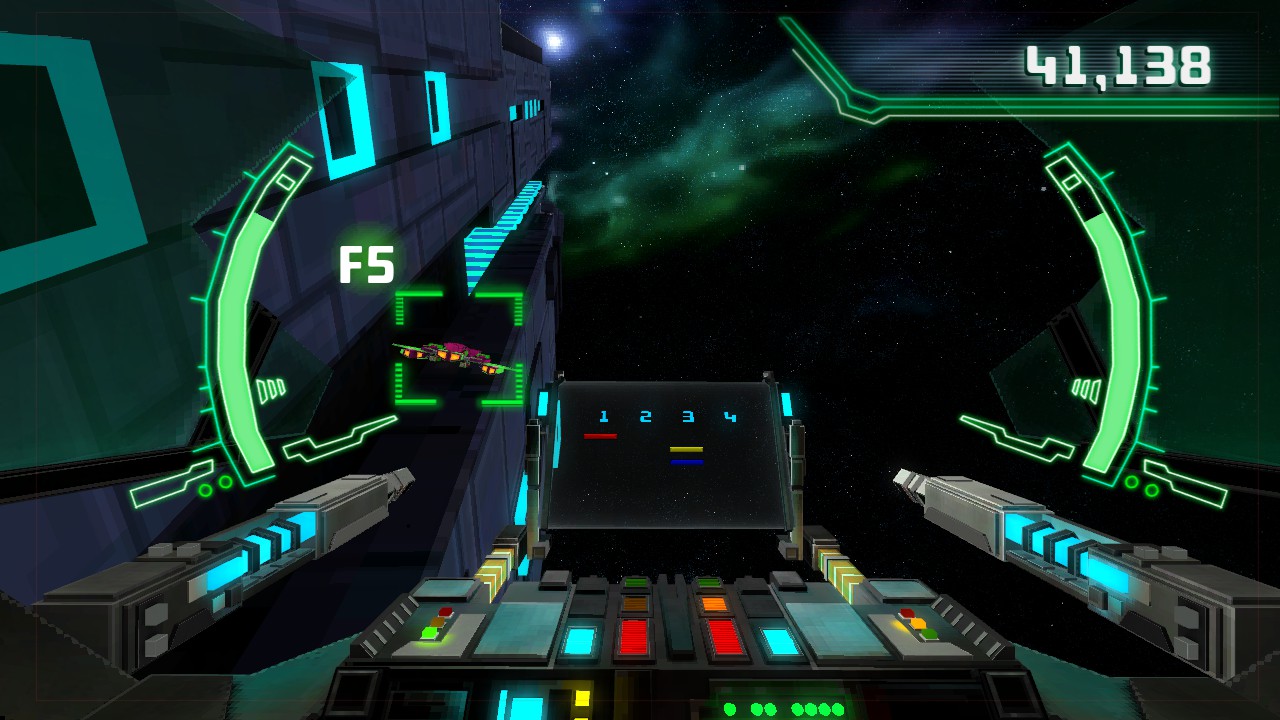 speaks true, and something which is clearly worth testing. I saw the game again at Eurogamer Expo where I spent a significant amount of time watching some professionals show off some of the new features on offer, and my mind was filled with excitement. So when the opportunity arose to review the title, I had to take it. I simply had to have this game and see if I could finally push me to realising one of my dreams.
speaks true, and something which is clearly worth testing. I saw the game again at Eurogamer Expo where I spent a significant amount of time watching some professionals show off some of the new features on offer, and my mind was filled with excitement. So when the opportunity arose to review the title, I had to take it. I simply had to have this game and see if I could finally push me to realising one of my dreams.
Ubisoft kindly provided a shiny new toy to me with the game too; a beautiful Epiphone Les Paul Special II in cherryburst; a full size guitar with double open coil humbucker pickups which produce a beautifully clean sound. If you aren’t a musician as such then you can have a look at the pictures in this review, but quite simply it is a beauty and to Ubisoft I am very grateful for you sending it to me! Now that this important note has been made, lets continue onto looking at the game itself.
Before you dive into the wonderfully wide array of features on offer in Rocksmith 2014, the game asks you a few questions to determine your level of ability before you begin to play, in order for it to “think” about how best to teach you. Rocksmith does a lot of “thinking”, which is a little bit scary in a way, but an incredible feature which we will come back to shortly. Once you have set your skill level, told it whether you are left or right handed, and chosen the style of headstock on your guitar so that the game can help you with tuning, you will move onto starting to learn to play. I went in at beginner level, as despite having plenty of knowledge of guitars and techniques I 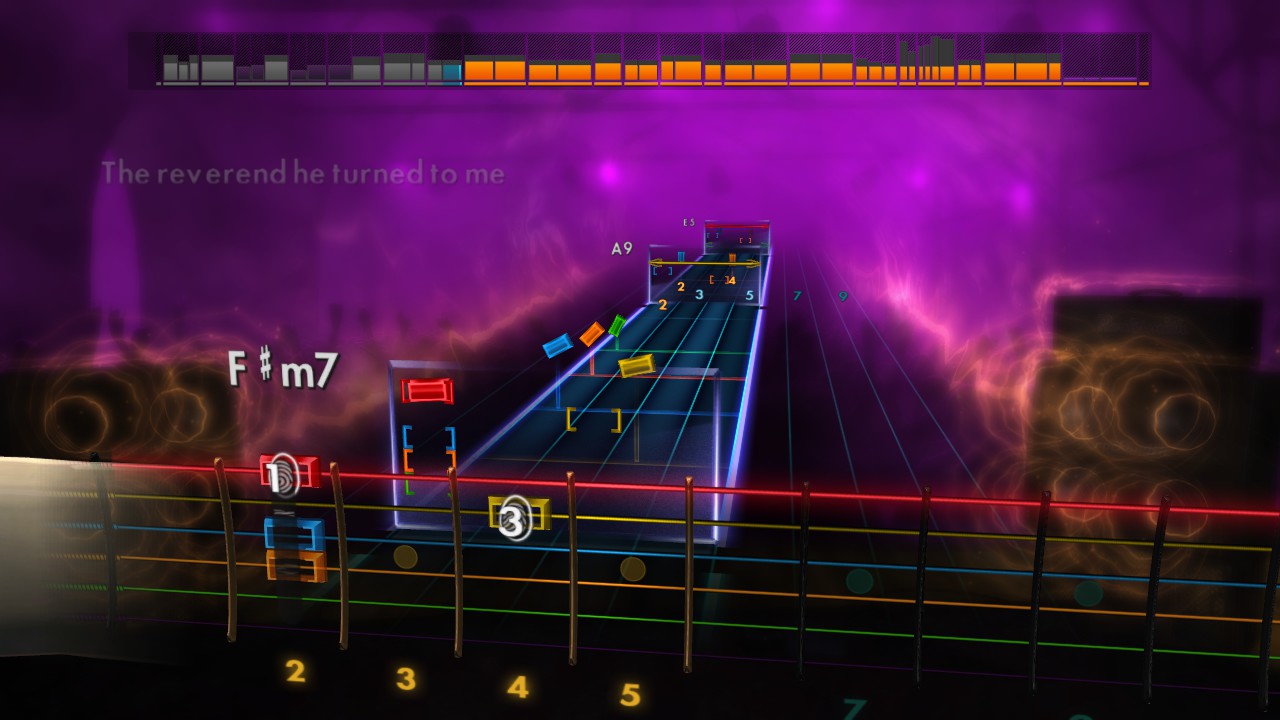 have always had trouble picking them up myself and have never been able to play a complete song. Rocksmith therefore decided to quickly teach me how to play and hold a note, how to tune the guitar and how the labour of the game would work before we went any further; very basic stuff yes, but useful if not crucial to an absolute beginner.
have always had trouble picking them up myself and have never been able to play a complete song. Rocksmith therefore decided to quickly teach me how to play and hold a note, how to tune the guitar and how the labour of the game would work before we went any further; very basic stuff yes, but useful if not crucial to an absolute beginner.
Once you complete these basic techniques the option is open to you as to what you would like to do next. The main menu allows you access to all of Rocksmith’s features at this point, however the game, as it does throughout your playing, will suggest what it “thinks” is best suited to you at this point. To begin with it recommends that you choose to either play a song or have a look in the Guitarcade. The Guitarcade is a part of the game which offers a selection of minigames all intended to hone your skills in certain areas of playing the guitar. It is a feature which has been brought over from the previous Rocksmith title but new minigames and features offer an improved set of experiences in this edition of the game. A favourite suggestion of Rocksmith’s seems to be the duck shooting minigame, in which you strum particular notes in order to, you guessed it, shoot ducks. This may sound random or even trivial to some of you reading this, but you are wrong. These minigames genuinely help you develop your finger placements and movements, and your technique for strumming notes and chords so that you come out with a much cleaner result when you are playing through  songs. The unique way in which the Guitarcade teaches you these things makes it easier on the brain too, seeing as your focus is less on how well or not you are doing and more on the game which has been placed before you. You naturally learn a skill while you work to win a game; an ingenious idea indeed.
songs. The unique way in which the Guitarcade teaches you these things makes it easier on the brain too, seeing as your focus is less on how well or not you are doing and more on the game which has been placed before you. You naturally learn a skill while you work to win a game; an ingenious idea indeed.
The Guitarcade is a nice supporting side feature to Rocksmith, but of course its main attraction is teaching you to play songs. The game does this in a very unique way. The way in which you play is comparable to Guitar Hero or Rockband visually, but before some of you spark up and say “well that’s not unique then”, there is a lot more to it than just that! So you get to this point in the game and you have a number of songs to choose from. Personally I thought it best to pick the song which the game suggested was the easiest; R U Mine? by the Arctic Monkeys. This is not a song I knew myself as generally I would go for some harder rock if I had the skill to go in at that, but having had a listen and decided the song wasn’t too bad I went ahead with it. Now once you choose your song it isn’t as simple as just playing it, and if you fail you try again. It would be harsh and unhelpful if the game were like that at all. First of all the game allows you to try and play the song, starting off simple with just a few notes and adding more and increasing speed if you are doing consistently well. The game adapts itself to your ability throughout the song so that it is never 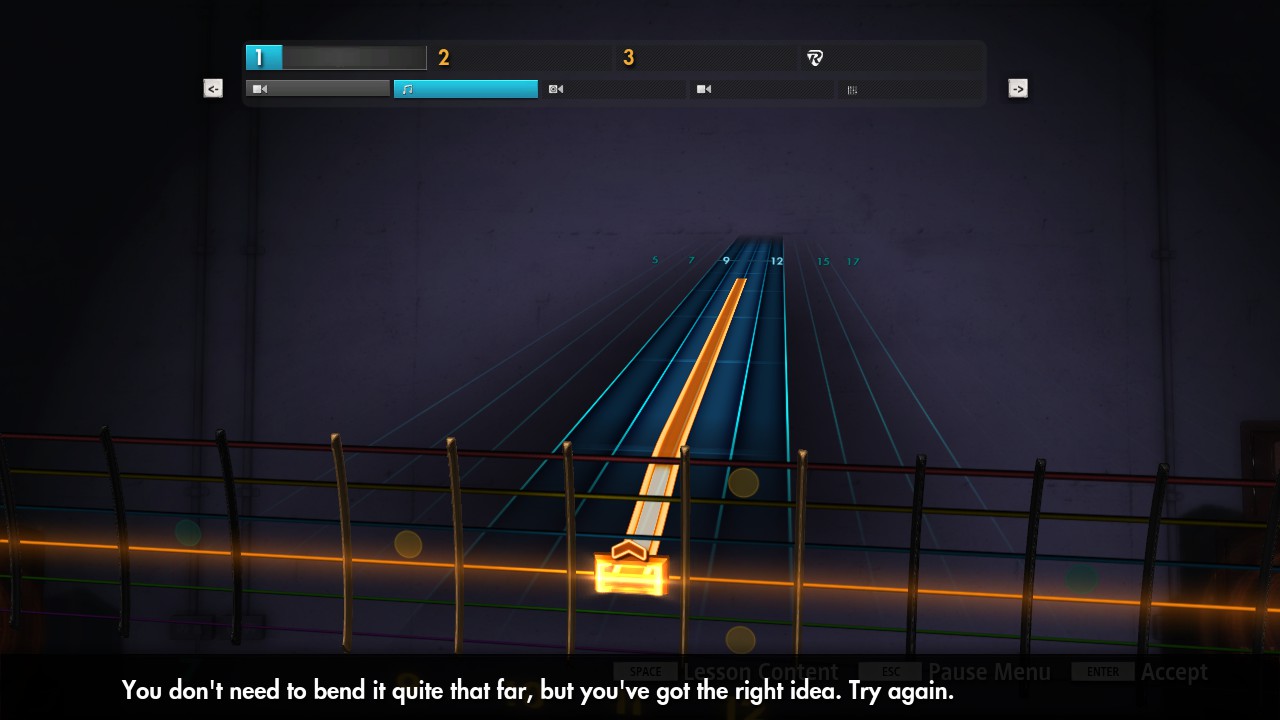 too hard for you to do. You must remember that the idea behind Rocksmith is that it teaches you to play, so it does not expect you to be an instant master and there is no such thing as failing. Once you have played the song through in this way once, that is when things in Rocksmith become quite special…
too hard for you to do. You must remember that the idea behind Rocksmith is that it teaches you to play, so it does not expect you to be an instant master and there is no such thing as failing. Once you have played the song through in this way once, that is when things in Rocksmith become quite special…
When you have attempted to play the song, you get a few seconds where “Rocksmith is thinking…”, after which the game produces three options for you which it thinks would help you to play the song. This could be practicing a certain technique, playing a small section of the song at different speeds and difficulties until you have mastered it, trying out some of the Guitarcade mingames, anything which it believes will help you based on the performance you have just produced. After you complete one of these options, it re-evaluates your ability and does the same thing again. This is, as you can probably already judge for yourself here, really very impressive and genuinely very helpful. If you haven’t played a song well you don’t want to be sat with the only option being to try again. Chances are if you are new to playing the guitar and you haven’t played a song well you won’t know what to do to improve either. So the fact that the game can analyse your performances and help you to improve in this way is fantastic. You are genuinely taught by the game rather than being given tools and left to teach yourself. Can you tell that I am impressed yet?
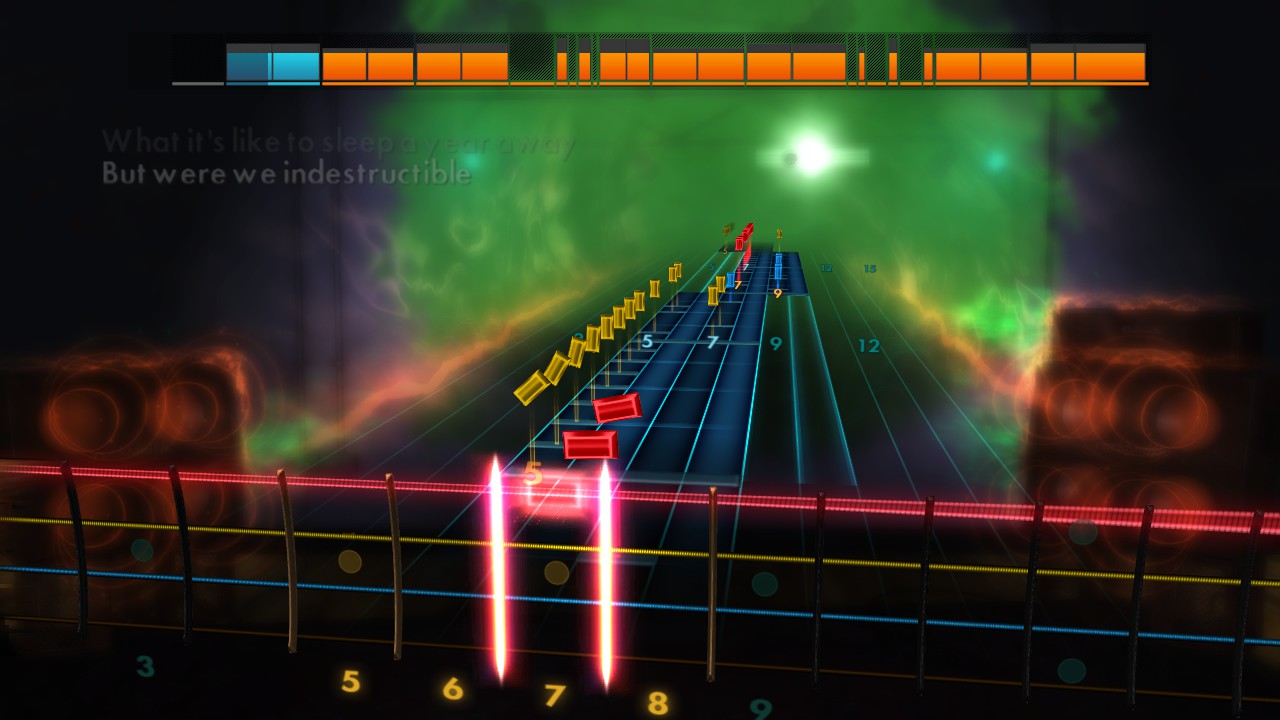 One new feature of Rocksmith which will impress both new players of the guitar and experienced ones alike is the Session Mode. This is a very clever piece of AI which allows you to essentially play with a band. You choose which instruments, up to four, you would like to support your own playing, and then as you play your guitar they will match your speed, tone and style to create a unique instrumental alongside you. I gave this a small go myself and was not particularly good at it with my simple level of skill, but having seen it demoed live by professionals at Eurogamer and by the fantastic Mr Jerry Cantrell at E3 it is clear that this is an incredible piece of innovative software for any musician to get their hands on. Even though my playing was a bit shoddy when I had a go, the outcome just from me playing the guitar was simply mind blowing. The drums, bass and rhythm guitars which I chose to support my playing matched perfectly to the speed and volume of what I was doing and, quite simply, it made me feel better at what I was doing myself! There are multiple deeper and more complex features to this mode too which allow you to change the tone of your guitar and the other instruments supporting you or the beats per minute you want the music to play at among other things. The instruments you can choose to play alongside are also very deeply varied too, with several styles of each under their overall headings. Drums for example allow you to pick from anything from Classic to Vintage to era-specific styles of drum kits. The possibilities of this mode of play are quite simply endless!
One new feature of Rocksmith which will impress both new players of the guitar and experienced ones alike is the Session Mode. This is a very clever piece of AI which allows you to essentially play with a band. You choose which instruments, up to four, you would like to support your own playing, and then as you play your guitar they will match your speed, tone and style to create a unique instrumental alongside you. I gave this a small go myself and was not particularly good at it with my simple level of skill, but having seen it demoed live by professionals at Eurogamer and by the fantastic Mr Jerry Cantrell at E3 it is clear that this is an incredible piece of innovative software for any musician to get their hands on. Even though my playing was a bit shoddy when I had a go, the outcome just from me playing the guitar was simply mind blowing. The drums, bass and rhythm guitars which I chose to support my playing matched perfectly to the speed and volume of what I was doing and, quite simply, it made me feel better at what I was doing myself! There are multiple deeper and more complex features to this mode too which allow you to change the tone of your guitar and the other instruments supporting you or the beats per minute you want the music to play at among other things. The instruments you can choose to play alongside are also very deeply varied too, with several styles of each under their overall headings. Drums for example allow you to pick from anything from Classic to Vintage to era-specific styles of drum kits. The possibilities of this mode of play are quite simply endless!
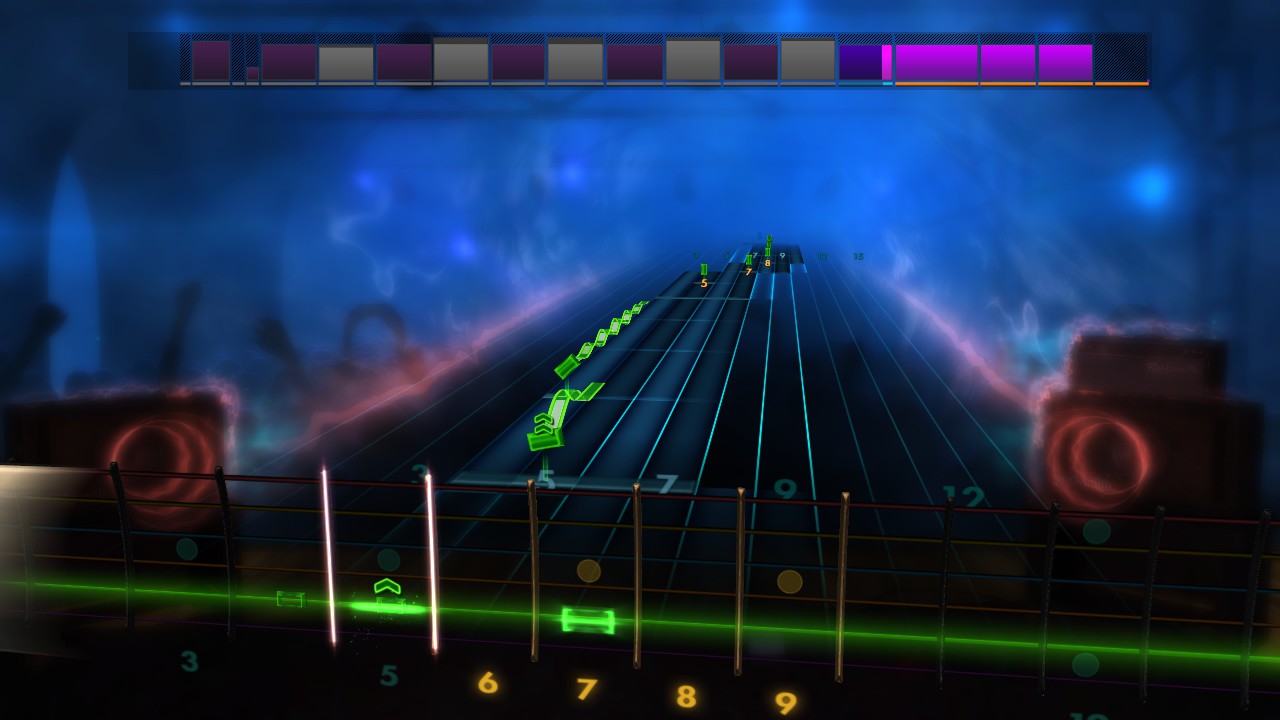 The Lessons which you can choose to utilise in Rocksmith are very helpful as well. These can be accessed from the menu, but are also one of the common suggestions you will receive after Rocksmith has finished “thinking” about what might help you next. The very gently ease you into playing new types of techniques, such as chords, slides, a hammer on, a pull off; basically any guitar playing technique which you might need to know. The lessons start off very basic, but teach you more and more as you need to know it. In a way, it feels more useful to let Rocksmith tell you when it thinks you need a new lesson than to just jump in at the menu and do them all, but at least the option is there and it is useful to be able to go back and repeat them if you need to. The lessons however contain probably my only complaint about this game. One of the questions it should maybe ask you at the start along with your playing hand and current ability is your age group, as sometimes the game can seem a little patronising when it is telling you to try something again, how to place a finger or even when it congratulates you. It is not a problem in that it does not affect the quality and overall effectiveness of the game, but there are only so many times it can say “good job” to you without you just laughing at it. Other than this though the lessons the game offers are fantastic and do a very good job of teaching you the techniques you need to play in a manner which works at your own pace.
The Lessons which you can choose to utilise in Rocksmith are very helpful as well. These can be accessed from the menu, but are also one of the common suggestions you will receive after Rocksmith has finished “thinking” about what might help you next. The very gently ease you into playing new types of techniques, such as chords, slides, a hammer on, a pull off; basically any guitar playing technique which you might need to know. The lessons start off very basic, but teach you more and more as you need to know it. In a way, it feels more useful to let Rocksmith tell you when it thinks you need a new lesson than to just jump in at the menu and do them all, but at least the option is there and it is useful to be able to go back and repeat them if you need to. The lessons however contain probably my only complaint about this game. One of the questions it should maybe ask you at the start along with your playing hand and current ability is your age group, as sometimes the game can seem a little patronising when it is telling you to try something again, how to place a finger or even when it congratulates you. It is not a problem in that it does not affect the quality and overall effectiveness of the game, but there are only so many times it can say “good job” to you without you just laughing at it. Other than this though the lessons the game offers are fantastic and do a very good job of teaching you the techniques you need to play in a manner which works at your own pace.
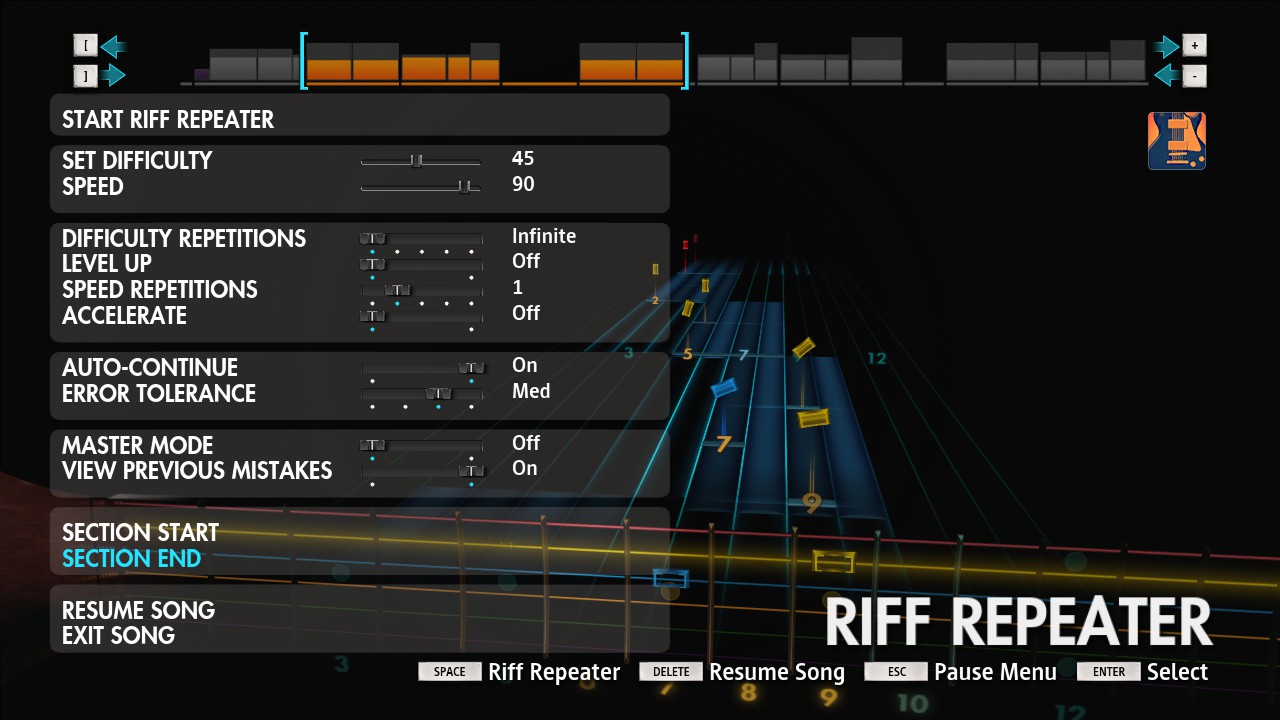 The game even allows you to personalise the sound you want from your guitar with its Tone Creator mode. You can use a serious of pre-amps, amp heads, amplifiers, pedals and the like to customise your game and play with the sound that truly suits you. This means you can bring your own unique style into play at any time, personalising your experience to be different from that which anyone else might find in Rocksmith 2014. You could spend hours tweaking your sound in this mode alone, and with equipment from some of the leading brands in the market, such as Marshall Amplification and Orange, you can make the perfect professional sound that you have always wanted come to life (and at a much lower price too!). Again, this mode is probably more for the experienced players of the game, but it can also be fun just to fiddle around and see what you can create if you are a beginner. As someone who always likes to have the perfect sound for my music, I found this mode a dream! Once you have created your perfect setup here you can assign it to the right analogue stick on your controller to bring it into action at any time during play, and you can always switch back to the default setting for that song by just pushing it up.
The game even allows you to personalise the sound you want from your guitar with its Tone Creator mode. You can use a serious of pre-amps, amp heads, amplifiers, pedals and the like to customise your game and play with the sound that truly suits you. This means you can bring your own unique style into play at any time, personalising your experience to be different from that which anyone else might find in Rocksmith 2014. You could spend hours tweaking your sound in this mode alone, and with equipment from some of the leading brands in the market, such as Marshall Amplification and Orange, you can make the perfect professional sound that you have always wanted come to life (and at a much lower price too!). Again, this mode is probably more for the experienced players of the game, but it can also be fun just to fiddle around and see what you can create if you are a beginner. As someone who always likes to have the perfect sound for my music, I found this mode a dream! Once you have created your perfect setup here you can assign it to the right analogue stick on your controller to bring it into action at any time during play, and you can always switch back to the default setting for that song by just pushing it up.
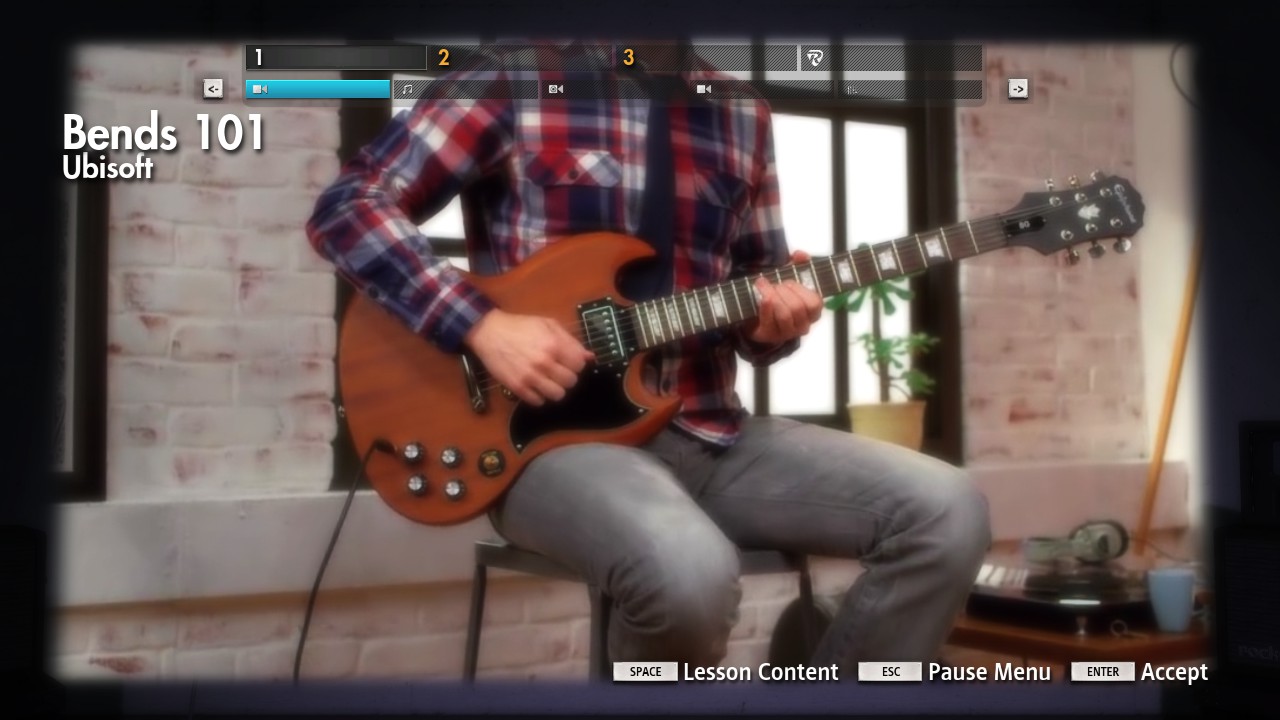 If you don’t want to learn alone, or you want to bring in a more experienced friend to help you along the way in your journey to mastering the majestic instrument that is the electric guitar then Rocksmith 2014’s multiplayer mode may appeal to you. Of course in order to use this you will need two of the Real Tone cables required to play the game, and of course two guitars, but assuming you have the setup the option is there for you to let loose and jam along with a friend. Of course if one of you is a guitarist and the other is a bassist then you open up a whole new opportunity to work towards a melody together. If there are two of you in your house who wish to learn to play the guitar then you could even split the cost of the game and use it together; that’s the benefit of multiplayer before you even turn the game on! Rocksmith have certainly improved upon the multiplayer offered in their previous title however, with a much tidier system for this being in place now, and a much easier one to set up.
If you don’t want to learn alone, or you want to bring in a more experienced friend to help you along the way in your journey to mastering the majestic instrument that is the electric guitar then Rocksmith 2014’s multiplayer mode may appeal to you. Of course in order to use this you will need two of the Real Tone cables required to play the game, and of course two guitars, but assuming you have the setup the option is there for you to let loose and jam along with a friend. Of course if one of you is a guitarist and the other is a bassist then you open up a whole new opportunity to work towards a melody together. If there are two of you in your house who wish to learn to play the guitar then you could even split the cost of the game and use it together; that’s the benefit of multiplayer before you even turn the game on! Rocksmith have certainly improved upon the multiplayer offered in their previous title however, with a much tidier system for this being in place now, and a much easier one to set up.
Rocksmith 2014 Edition is an intelligent, powerful and wholly impressive innovation in gaming. It is not a game which will give you 10 hours of thrilling gameplay, but it offers a life skill and a sense of true achievement, and that in many, many ways is worth far more! Within just a couple of hours of playing I had learned the basic notes for the introduction to a song I had never heard before. That might not sound like much, but imagine what is possible in a couple of days, weeks or months at that sort of rate of learning. There is a fantastic selection of features on offer to both experienced guitar legends and people who have never even strummed a string before to make use of, and an infinite amount of playability on offer. Rocksmith is both an exciting game and an incredible tool, not to mention something truly unique in the gaming industry at present. I look forward to continuing my journey now and seeing just what I might be able to accomplish by sticking with it. If you want to start your own journey too then there is no better place to start, and you certainly won’t be disappointed!
The Good – A great selection of songs to learn, clear and simple lessons to learn from, minigames to help you learn techniques with ease, an intelligent system which tells you how best to progress, a positive teaching attitude, a fantastic AI-controlled jamming arena to play with a band, a vast, detailed and in depth level of sound customisation… Rocksmith 2014 Edition offers everything you could possibly need to help you learn to play the guitar and more; perfect for beginners and professionals alike with variety and depth offering something for everyone!
The Bad – The game’s somewhat patronising voice-overs may seem laughable or irritating to older players, and some subtitles don’t equate to the speech.
Disclaimer:All scores given within our reviews are based on the artist’s personal opinion; this should in no way impede your decision to purchase the game.









You must be logged in to post a comment.